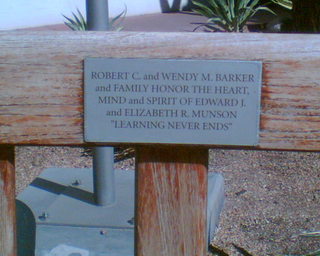A simple question
Agile Coach: OK. A professional takes responsibility.
P: Yes. Many projects go wrong because so few people really take responsibility.
Agile Coach: Blaming is much easier, isn’t it? Is there more to being professional?
P: (Embarrassed silence. Then) Let me think about it and I’ll have the answer by next week. Is that ok for you?
Agile Coach: Yes. I want to learn more about becoming professional.
What is the acceptance test for “a professional”? How can we recognise one? What are the essential characteristics of a professional?
Acceptance criteria #2: A professional is openminded and a lifelong learner
Other people might have good ideas too
Recently I heard a bunch of “Agilistas” dismiss CMMi offhand. I know of CMMi implementations and training that were poorly done and resulted in not much more than extra overhead. Some people don’t understand the spirit and only know the letter. I’ve seen the same with Agile. Despite flawed implementations, CMMi contains a bunch of interesting ideas and techniques. The spirit of CMMi is compatible with my Agile values.
At another Agile gathering hackles were raised when a presenter dared to suggest that the Lean practice of “Standardized Work” might be usefully applied to IT work. “We’re not production workers!” they cried. Others dismissed practices because they would be used by “evil managers” to create “plug-compatible programmers”. My hackles went up when a session presenter recently dismissed first all managers then all salespeople as ignorant and evil.
A professional can’t afford a closed mind.
Other discplines, other approaches and other professions have interesting ideas. The most interesting training I ever followed was a sales training.
I like conferences where I can see and meet presenters with different backgrounds and ideas. For example, I like the diversity in subjects and delivery of the Benelux XP Days, but I worry that there are few sessions that present something I disagree with. I wonder why there are so few sessions that explain what went wrong with Agile.
I seek to perceive more than I seek to be perceived. I seek and find value wherever I can.
Mistakes are a learning opportunity
We’re trained to dislike and avoid mistakes. However, mistakes do happen. How we react to them allows us to see who the professionals are.
A professional says “Thank you!” to a bug reporter.
When we learn of a mistake we get the opportunity to do some deep learning and improvement. We learn from the answer to two questions:
- “Why didn’t we detect this problem earlier?” What’s wrong with our tests? Why wasn’t this case covered? How can we detect this type of issue sooner? How can we improve our tests? If we do this consistently, we implement “Jidoka” so that we’re alerted immediately when something goes wrong and can fix the problem while it’s still cheap to correct.
- “Why did we make this type of mistake?” What is the root cause of the problem? What is it that allows this type of problem to occur? How can we change our work or methods so that this type of problem can’t occur? If we do this consistently, we implement “Poka Yoke” or mistake-proofing because the cheapest issue to fix is the one that doesn’t happen.
I welcome reported mistakes as a learning opportunity.
 Continuous Improvement
Continuous Improvement
Standardized Work documents the best way we know of doing something. Tomorrow we’ll do better. It’s important to celebrate today’s successes. But we know we can do better next time, if we learn and improve.
A professional always looks for ways to do things better.
Thinking tools like Systems Thinking, Theory of Constraints, Lean and Agile help me to make sense of the situation, see places to intervene and find creative ways to make things better. Personal Agility tools like Congruence, Agile Fairytales and other games allow me to become a better person, colleague, friend and coach every day.
I have done my best today; I can do better tomorrow.
Invest in learning
All of this improvement and learning costs time, effort and money. Companies and people facing difficult times fear they have none of these three. Yet, when the going gets tough the smart keep learning.
A professional invests in learning.
I meet new people at work, conferences, training and talks. I learn something from each person I meet. Every situation has interesting angles that make me see new things. Books, both fiction and non-fiction, make me travel to different worlds, introduce me to new people, new ideas. I read about a subjects that are outside of my normal expertise and work. For example, this year I read about physics, evolution, consciousness, free will and philosophy and I re-read fairytales.
I set aside time and money to keep learning. I will keep learning for the rest of my life.
